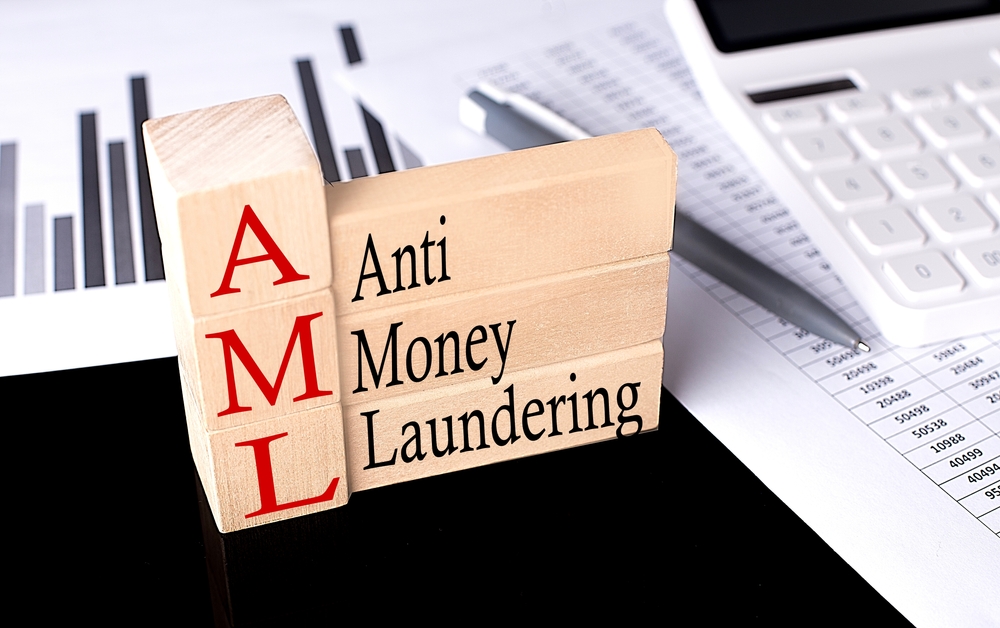Anti-Money Laundering (AML) is a set of rules. They aim to stop criminals from hiding illegal money as legitimate income. In today’s globalized economy, AML is key to financial regulations. It ensures the integrity of financial systems worldwide. AML screening is a vital compliance process. It helps businesses detect and prevent money laundering. It involves checking customer data against watchlists and sanctions lists. This is to find risks linked to money laundering and terrorism. It also checks adverse media sources for the same.
AML screening is more than a rule. It’s a vital safeguard. It protects businesses from legal penalties, financial losses, and reputational damage. By using strong AML screening, organizations can manage risk. They can also ensure compliance with changing regulations. Lastly, they can help fight financial crime.

What is money laundering?
Money laundering makes “dirty money,” or illegal profits, look legal. Money laundering aims to hide the source of crime. It seeks to integrate the funds into the legal financial system. The process typically involves three stages:
1. Placement: The introduction of illicit funds into the financial system. This could be via cash deposits, buying assets like real estate, or using businesses to funnel the money.
2. Layering: Obscuring the origins of money through complex financial transactions. This stage often involves moving funds between multiple accounts. This makes it hard to trace the original source.
3. Integration: The final stage. The laundered money is put into the legitimate economy. At this point, the funds appear to be legally earned and can be used freely.
Money laundering harms the world. It fuels organized crime, corruption, and terrorism. It destabilizes economies and undermines financial institutions. It also risks businesses and governments.

What is Anti-Money Laundering (AML)?
Anti-Money Laundering (AML) is the effort to stop money laundering. It involves financial institutions, governments, and international organizations. AML includes regulations, laws, and procedures. They seek to find suspicious activities. They want to enforce transparency in financial transactions. They aim to ensure businesses meet legal standards.
Key global and national regulations include:
– Financial Action Task Force (FATF): An international body. It sets standards and promotes ways to fight money laundering, terrorist financing, and related threats.
– Financial Crimes Enforcement Network (FinCEN): A U.S. agency that fights financial crimes by analyzing transaction data.
RBI Guidelines: In India, the RBI provides banks with detailed AML rules. They include KYC norms and due diligence procedures.
These regulations are vital. They shape the AML landscape. They help businesses worldwide fight financial crime. They ensure the stability and security of financial systems. By meeting AML requirements, organizations comply with the law. They also help in the fight against crime and corruption.
The Purpose of AML Screening
AML screening aims to find and stop suspicious transactions. These may be linked to crimes like money laundering and terrorist financing. AML screening helps organizations find high-risk individuals, entities, or transactions. It does this by checking customer data against sanctions lists, PEP lists, and adverse media. This process lets businesses check for risks before financial dealings with these entities. It protects the financial system’s integrity.
AML screening helps organizations meet their regulatory obligations. It does this by identifying and flagging suspicious activities. It also ensures compliance with national and international AML laws. It reduces the risk of businesses being used to launder money. This lowers operational and reputational risks.
Why AML Screening is Necessary for Businesses
AML screening is vital for businesses, especially in high-risk sectors. These include banking, fintech, real estate, and insurance. For these industries, the legal obligation to comply with AML regulations is non-negotiable. Governments have created strict rules, like the FATF guidelines. They aim to make businesses watch for money laundering.
Noncompliance with AML regulations can have severe consequences for businesses. They may face hefty fines, legal penalties, and loss of operating licenses. Also, businesses that accidentally help money laundering may damage their reputation. This can lead to a loss of trust from customers, partners, and stakeholders.
Also to regulatory compliance, AML screening plays a pivotal role in risk management. Businesses can protect themselves from financial crime by using thorough screening. It lowers the risk of costly legal action. It also protects the company’s brand and reputation. With rising global scrutiny, especially in crypto, strong AML screening is vital for safe, compliant operations.
In sectors like real estate and fintech, large sums are often transferred. So, businesses need to go beyond compliance with AML screening. It ensures long-term viability by fostering a secure, trustworthy environment for financial transactions.
Types of AML Screening Processes
AML screening is a multi-faceted process. It involves various checks to detect and prevent money laundering. These screenings check the risk of customers, transactions, and entities. They do this by cross-referencing data with sanctions lists, adverse media, and other risk indicators. Each type of AML screening is vital. It helps businesses comply with regulations and protect against financial crimes. Below are the key types of AML screening processes.

Sanctions Screening
Sanctions screening matches customer data against international sanctions lists. They are maintained by the Office of Foreign Assets Control (OFAC), the EU, and the UN. These lists include those with trade restrictions. They engage in illegal activities, like terrorism and drug trafficking, and violate human rights. They include individuals, organizations, and countries.
Businesses check for sanctions by seeing if a customer is on these restricted entities. If a match is found, further transactions may be banned. The business may also have to report the match to regulators. Sanctions screening is essential to avoid regulatory breaches, financial penalties, and reputational damage.
PEP (Politically Exposed Persons) Screening
PEP screening finds individuals with prominent public positions. They include government officials, top military officers, judges, and senior execs of state firms. It also includes their immediate family and close associates. They are high-risk due to their influence and potential for corruption.
Screening for PEPs is crucial. Interacting with them raises financial crime risks for businesses. Identifying PEPs during onboarding or monitoring can cut corruption and money laundering risks. They can then implement enhanced due diligence (EDD) measures.
Adverse Media Screening
Adverse media screening, or negative news screening, involves searching for media mentions. It looks for links to financial crime, fraud, corruption, or other wrongdoings. This screening checks public sources for negative news and blogs. It looks for risks.
Adverse media screening is vital. It helps businesses find risks not shown in traditional sanctions or watchlist checks. By finding those linked to negative media, businesses can improve their decisions on transactions and partnerships.
Watchlist Screening
Watchlist screening checks customer data against various watchlists. These include government and private lists of people or groups involved in crime or suspicious activities. Regulatory bodies, law enforcement, and financial institutions maintain these watchlists. They can include persons of interest in terrorism, money laundering, or fraud cases.
Watchlist screening helps businesses find high-risk individuals or groups. They may not be on sanctions lists but are seen as threats. Watchlists must be monitored. This ensures compliance with regulations. It also protects against high-risk financial activities.
Transaction Screening (SIP/SIE)
Transaction screening aims to find suspicious activities. It does this by analyzing customer transaction patterns. SIP (Suspicious Transaction Identification Program) and SIE (Suspicious Activity Monitoring) are key to this. Transaction screening aims to spot unusual behavior. Examples include: large or repeated cash deposits, transfers to high-risk areas, and sudden changes in transaction volumes.
Businesses must file Suspicious Activity Reports (SARs) with the authorities when they find anomalies. This screening helps to spot money laundering before it escalates. It lets businesses take preventive action, as required by AML rules. Transaction screening is a tool to fight financial crimes. It catches illicit activities early in a transaction.
By mixing these AML screening processes, businesses can better fight money laundering and financial crimes. This will ensure compliance with the law and protect their market reputation.
When and How to Conduct AML Screening?
AML screening is vital at key points in a business’s dealings with customers and transactions. The primary instances when AML screening should be performed include:
– Customer Onboarding: AML screening is crucial when starting a relationship with a new customer. This means confirming the customer’s identity and checking their risk level. We must ensure they are not involved in money laundering or other illegal activities. This step is critical to meet KYC rules and avoid future risks.
– High-Value Transactions: For high-value transactions, additional AML screening is required. High-value transactions may indicate money laundering. So, they require enhanced scrutiny. We must ensure the funds’ source is legitimate and that the transaction meets regulations.
– Trigger Events: Certain events or changes in a customer’s profile may trigger the need for AML screening. Trigger events can include: 1. Big changes in transaction patterns. 2. A customer’s move to a higher-risk area. 3. New info that suggests a change in the customer’s risk profile. In such cases, businesses must reassess the customer’s risk level. They must ensure no suspicious activities are occurring.
-Ongoing Monitoring: We must continuously monitor customer accounts and transactions. This is vital for spotting and addressing new risks. Regular updates and reviews help keep risk assessments current. They ensure that any changes in a customer’s profile or behavior are promptly addressed.
How AML Screening is Performed?
The AML screening process has steps to detect and reduce money laundering risks. Here’s a step-by-step breakdown:
1. Gathering Customer Data: The first step involves collecting comprehensive information about the customer. This includes personal details such as name, address, date of birth, and identification documents. For businesses, this may include details about their ownership, structure, and finances.
2. List Matching: The system matches the customer data against various lists. These include sanctions lists, PEP lists, adverse media reports, and watchlists. This step helps find matches with those linked to financial crimes or high-risk activities.
3. Risk Assessment: After matching customer data with relevant lists, we assess the risk of the customer or transaction. It means analyzing factors like transaction patterns, fund sources, and risk. Also, it means analyzing the business relationship. The risk assessment checks if the customer or transaction is acceptable. If not, it requires further scrutiny.
4. Review Processes: For customers or transactions flagged as high-risk, we start additional reviews. This may require enhanced due diligence (EDD) measures. These include obtaining more detailed information, conducting deeper investigations, or involving compliance officers. The review process ensures that any potential risks are thoroughly assessed and addressed.
5. Documentation and Reporting: The AML screening process documents all findings. It includes any identified risks and the actions taken in response. If suspicious activities are detected, businesses must file Suspicious Activity Reports (SARs) with the authorities. Proper documentation and timely reporting are vital. They ensure compliance and a clear audit trail.
6. Ongoing Monitoring and Updates: AML screening is not a one-time process but requires ongoing monitoring. Businesses should regularly update their AML policies. They should review customer data and adjust screening procedures to address new risks and regulations.
Best Practices for Effective AML Screening
How to Make AML Screening Processes Effective?
To make AML screening strong and efficient, businesses should use best practices.
– Leverage Automation: Automated AML screening tools can greatly improve the screening process. They are faster and more accurate. Automation quickly matches customer data against global sanctions, PEP, and watchlists. It also improves transaction monitoring and risk assessment. This reduces human error and enables real-time detection of suspicious activities.
– Ensure Regular Training: Employees in AML compliance must have continuous training. Regular training sessions should cover: the latest AML rules, new threats, and best practices. Keeping staff updated on new developments can help. It will enhance their understanding of AML processes. This will improve their ability to detect and respond to risks.
– Adopt a Risk-Based Approach: A risk-based approach helps businesses use resources better. It focuses on higher-risk customers and transactions. This approach assesses the risk of customers. It uses their location, transaction behavior, and business type. High-risk entities should get more scrutiny and due diligence. Lower-risk ones can get standard AML checks.
– Integrate AML Processes Across the Organization. AML screening must be part of all business operations. This includes onboarding and ongoing monitoring. Consistent application of AML practices across departments is vital. It keeps a strong, effective compliance program.
The Role of Technology in AML Screening
– Accuracy: Automated AML screening tools significantly improve the accuracy of screening processes. These tools use advanced algorithms and data matching. They cut human error. They ensure accurate checks of customer data against global sanctions, PEP, and other watchlists. This precision helps in effectively identifying high-risk entities and suspicious activities.
– Speed: A key advantage of automated AML tools is their speed. They can process large volumes of data quickly. Automated systems can screen customer data and transactions in real-time. This helps businesses quickly find and respond to potential risks. This fast processing is vital. It helps us stay compliant and address suspicious activities before they escalate.
– Scalability: As businesses grow, manual AML checks can become too slow and costly. Automated AML tools are scalable. They can process many transactions and customer records. This won’t raise workloads or costs. This scalability keeps AML compliance manageable and cheap as operations grow.
– Consistent Compliance: Automated tools ensure AML screening meets regulations. Standardizing the screening process helps businesses. It ensures uniform compliance efforts. It also reduces the risk of missing critical checks. Automated systems can be updated to reflect changes in regulations and sanctions lists. This ensures ongoing compliance.
– Better Risk Management: Automated AML tools have advanced risk features. They include real-time alerts for suspicious activities and risk scoring models. These features let businesses manage risks from money laundering and financial crimes. Risk management in screening helps businesses to make informed decisions and implement controls.
– Streamlined Reporting: Many automated AML tools have built-in reporting. It simplifies generating Suspicious Activity Reports (SARs) and other compliance docs. These tools can automatically compile and format data for regulatory reports. They reduce the admin burden and ensure reports are accurate and timely.
– Improved Efficiency: Automating routine AML tasks lets businesses use resources better. They can then focus on higher-value work. This efficiency cuts costs and boosts compliance teams’ productivity.
Conclusion
Anti-Money Laundering (AML) screening is vital for any business’s compliance. It helps reduce risks and maintain the integrity of financial systems. Strong AML screening can help businesses find and stop suspicious activities tied to money laundering, terrorist financing, and other financial crimes.
Effective AML screening helps meet regulations. It also protects businesses from legal penalties, financial losses, and reputational damage. Businesses can manage risks by screening customers at key times. These include onboarding, high-value transactions, and trigger events.
Using advanced tech, including digital AML screening tools, boosts these processes. Automation greatly improves accuracy, speed, scalability, and consistency. It lets businesses handle large volumes of data and transactions with ease. These tools boost compliance, risk management, and alignment with evolving regulations.
In summary, AML screening is not just a regulatory duty. Businesses must protect their operations and ensure financial integrity. By adopting best practices, and using tech, businesses can navigate AML compliance. They can mitigate risks and create a secure, compliant environment.



